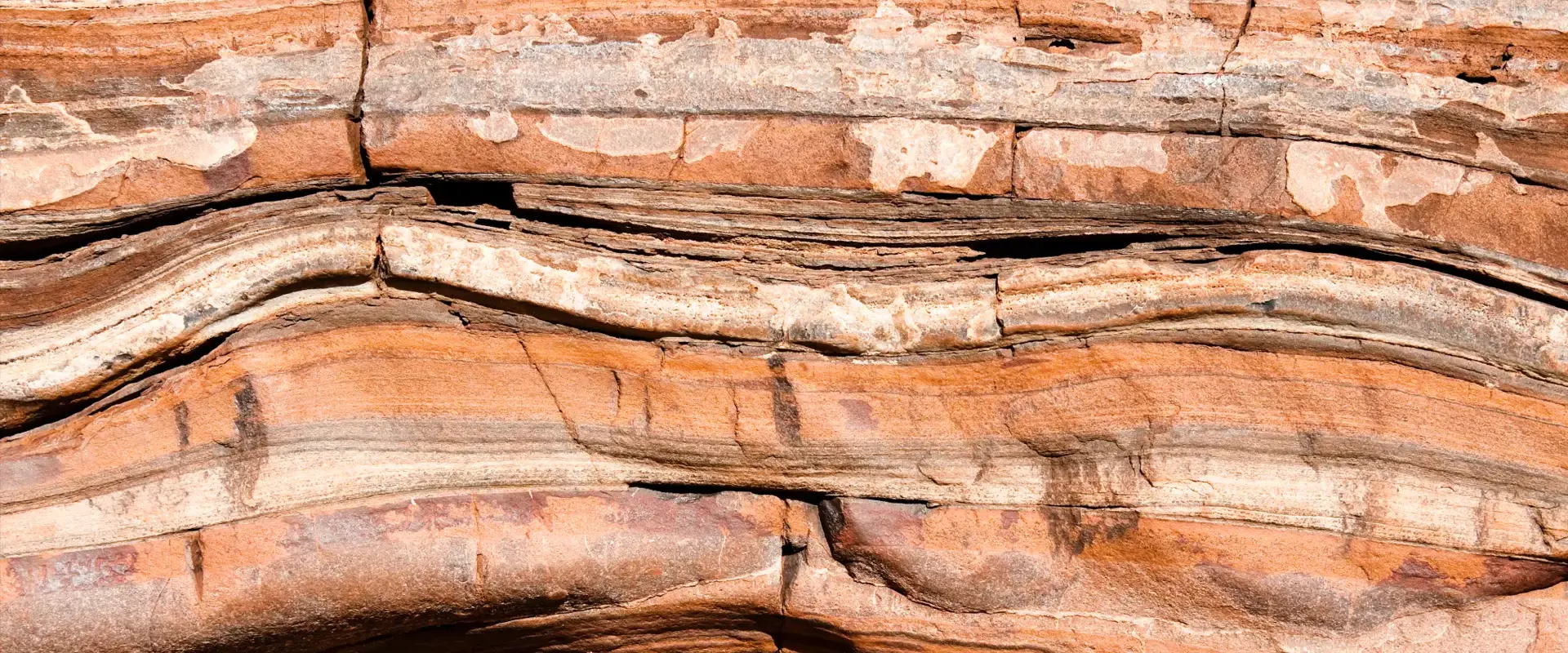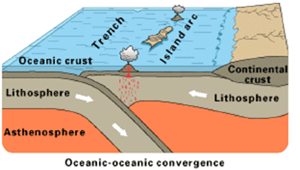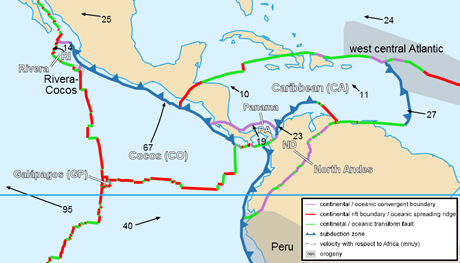
Windward Islands, West Indies

The Windward Islands, part of the West Indies Island Arc, are a modern day analogue for the processes we see at Badcall in North West Scotland. Badcall is an important site for studying the formation of continental crust, a process that continues to go on today all around the world at ocean island arcs such as the Aleutian Islands, the Ryuku Islands in Japan and West Indies island arc in the Caribbean.
The rocks formed at Badcall date back to the Archaean and it is thought that this crust derived from rocks rather like modern oceanic crust and that this was subjected to high temperatures (over 1000 degrees). When we look at modern day geological settings of where this process might have been possible, the most likely option is subduction zones. This supports the theory that plate tectonics were active nearly three billion years ago.
 |
|
| Island arc setting: © USGS |
 |
|
| Destruction after the eruption of Mt Pelee in 1902: © View Latin America |
Scientists have long thought that new continental crust forms in volcanic island arcs. Scientists know that the magma brought up in island arcs has a geochemical signature broadly similar to that of continental crust. The predominant process behind the formation of new continental crust is down to the partial melting that goes on deep beneath island arcs. As the subducting slab dives beneath the converging plate, it brings sea water, locked in the ocean crust, deep into the mantle. As the plate heats up the water is liberated, lowering the melting point of the earth's mantle (the asthenosphere) and causing partial melting. This produces the primary magma that erupts at island arcs. However, the thickness and buoyancy of the overriding plate can prevent the upwards motion of the magma so it can pond at the bottom of the crust, forming a magma chamber. At this stage the magma can start to cool, forming crystals that drop out of the melt, gradually
 |
|
| Regional map of Caribbean Tectonics: © Sting and Woudloper |
changing the chemistry of the melt. This is also affected by the assimilation of the surrounding rocks that may partially melt and be incorporated into the magma chamber. In this way, the chemistry of the magma changes over time so that when the magma does eventually ascend to be erupted in an island arc, the chemistry may be somewhat different to the initial met.
There are other inconsistencies within the chemistry of island arc magmas that continue to be debated today. For example, you can read about the relamination theory on the Columbia University website.
Related Links
Other sites
- Twin: Windward Isles
Cwm Idwal
- Twin: Mount Pinatubo
Sperrin Mountains
- Twin: Sierra Nevada
Southern Uplands
- Twin: Nankai
Ben Arnaboll
- Twin: Glarus Thrust
Outer Isles
- Twin: Tohoku Earthquake
Clogherhead and Shannon
- Twin: Papua New Guinea
Cairngorms
- Twin: New Hampshire Granites
Great Glen Fault
- Twin: North Anatolian Fault
The Lizard
- Twin: Troodos Ophiolite
Yoredales
- Twin: Antarctica
Stanage Edge
- Twin: Ganges Delta
Hartland Quay
- Twin: Zagros Range
Amroth-Saundersfoot-Tenby
- Twin: Salt Range, Pakistan
Vale of Eden
- Twin: East African Rift Valley
Zechstein
- Twin: Sicily
Alderley Edge
- Twin: Navajo Sandstone
Isle of Skye
- Twin: Mount Kilimanjaro
Lulworth Cove
- Twin: Albania
Giant's Causeway
- Twin: Cascade du Ray Pic
